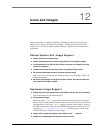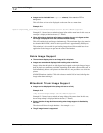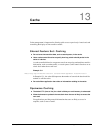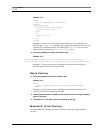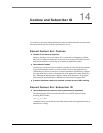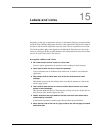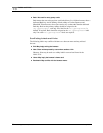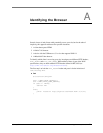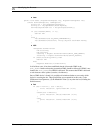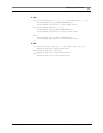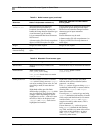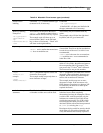
February 2001 Genie Application Style Guide 79
Differences between Browser Types in Same Class
B
Default action
labelling
Unlabelled <do> is labelled with the type
(truncated to fit, if necessary)
Unlabelled
<do type="accept">
is labelled OK – all others are labelled with
the type (truncated to fit if necessary)
Back key handling
Example of
<do type="prev"
label="Main">
<go
href="home.wml"/>
</do>
The back key can only have the action
<prev/> – any attempt to make it have a
different action will leave the key in place.
The example code will show up as an
action labelled "Main" on the left hand
key (or down a Card menu) – "Back" will
still show on the right hand key.
The back key may be redefined with any
action.
The example code will label the right hand
key Main, and will go to home.wml
Layout tags
<p mode="nowrap"> has no effect.
<small> text is smaller than normal text.
<u> does not underline text
<p mode="nowrap"> truncates text to the
screen width. There is no obvious mechanism
to read the rest of the text. Use of this is not
recommended.
<small> text is the same size as normal text.
<u> underlines text – not recommended as
looks like a link.
Key accelerators There are none If a user presses a number key on a card
which is a list of links, the phone navigates to
the corresponding link. For example, if the
user presses key “4” the 4
th
link is followed.
The browser does not provide numbers.
<input
format="…"/>
example
<input
format="Aa*a"/>
The "*" prequalifier requires at least one
character to be accepted.
The example would accept only three or
more characters of input.
The “*” prequalifier will match zero or more
characters. Where Alphabetic characters are
required, the browser may pack incomplete
entries with an underscore character.
The example would accept two or more
characters of input. If the user enters only
ONE character, an underscore character will
be inserted by the browser to make up the
required characters.
sendreferer in
<go>
statements
The full absolute URL is sent, irrespective
of whether a relative one could be used.
Part of the referring URL is sent. This
behaviour has not been completely
characterised and may be incomplete. Where
a relative URL could be provided, only the
leafname was returned (even if this did not
provide the proper path). For a URL which
would need to have been provided as a full
absolute URL the referrer has been presented
as
//www… (i.e. missing the http).
Developers relying on this for security should
check what gets sent with real handsets and
verify that it meets their security objectives.
Table B-2. Mitsubishi Trium browser types (continued)



